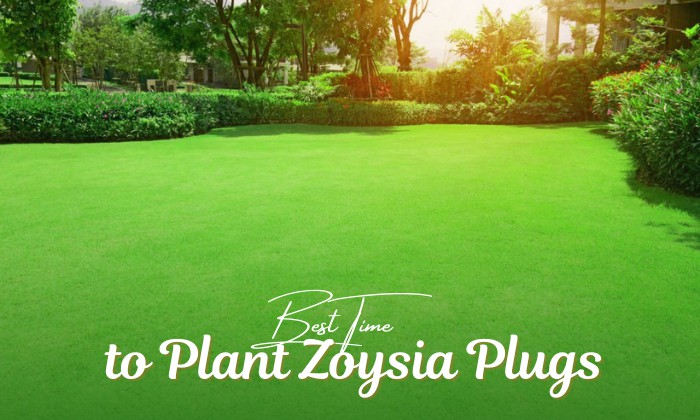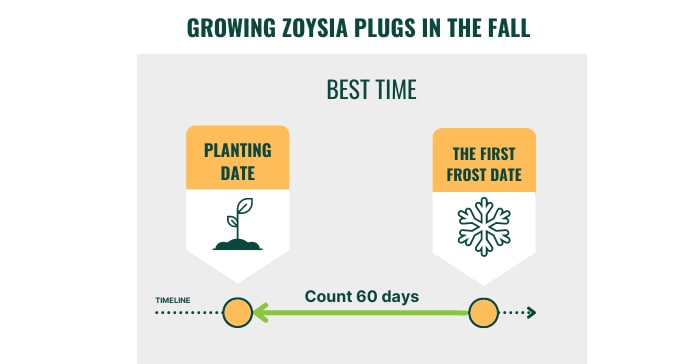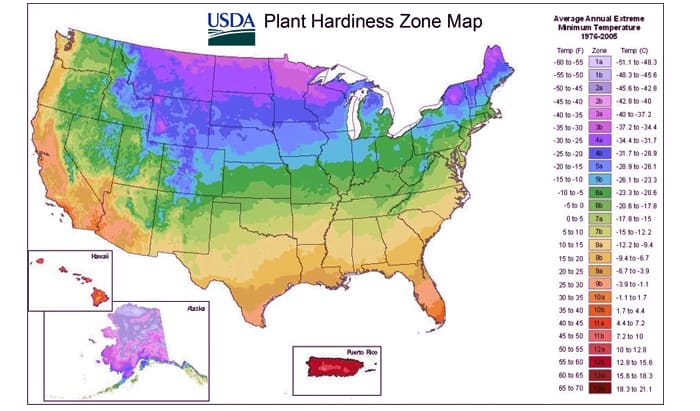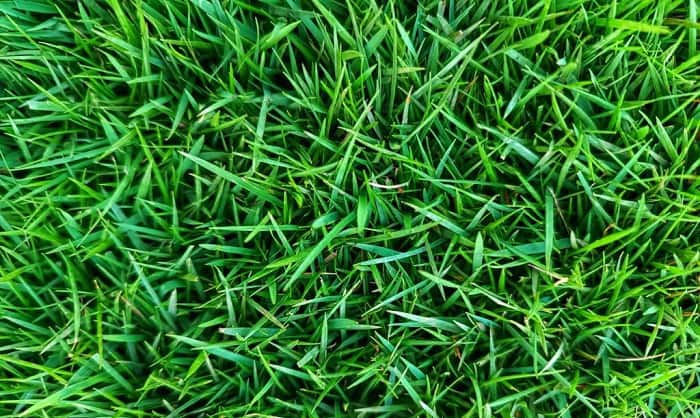If you want your zoysia grass to spread faster, planting via plugs is the best way to go. However, it is essential that you know when to plant them so that you could have a lush green lawn by the spring and summer months!
So, when to plant zoysia plugs? The best time to grow zoysia grass through plugs is in the middle of spring to early summer. This is approximately from April 15 to June 15, but may vary depending on your location.
Read this article further to know more about planting zoysia grass plugs!
Table of Contents
- Best Time to Plant Zoysia Plugs
- How Late Can I Plug Zoysia Grass?
- Best Zoysia Plug Varieties to Plant
- How to Plant Zoysia Plugs?
- How to Transplant Zoysia Grass?
- Factors to Consider When Planting Zoysia Plugs
- Care and Maintenance After Planting
- Troubleshooting Common Issues
- Frequently Asked Questions
- Conclusion
Best Time to Plant Zoysia Plugs
1. Mid-spring to early summer planting
The most recommended time to plant zoysia grass in existing lawns is mid-spring to early summer after the last spring frost in your area. Specifically, this would be around April 15 to June 15, but this depends on where you’re located.
During these seasons, the soil is workable, since frost has finally thawed. Zoysia is a warm-season grass, which means it won’t establish well in soil temperatures below 65°F.
2. Fall planting
You can also plant plugs in fall, a minimum of 60 days before the first frost hits your area. This waiting period is crucial, since you need to give sufficient time for the zoysia grass to grow.
3. Planting based on growing zones
Zoysia grass thrive in USDA Hardiness zones 5 to 11 but are ideally planted in warmer states in the south.
| USDA Hardiness Zone | When to Plant |
| 5 | May 15 to August 1 |
| 6 | April 21 to August 4 |
| 7 | April 15 to August 8 |
| 8 | March 15 to September 16 |
| 9 | February 1 to October 1 |
| 10 | All year |
| 11 | All year |
How Late Can I Plug Zoysia Grass?
You can plant zoysia grass via plugs until September if you live in an area where the first fall frost starts in November. These would be areas found in Zones 8 and 9 when the average first frost dates are November 7 to 28 and November 25 to December 13.
For best results, make sure you plant more than 60 days before these dates so that there’s enough time for your zoysia grass to grow.
Best Zoysia Plug Varieties to Plant
Here are the best fine and coarse-textured zoysiagrass cultivars you can plant:
| Cultivar | Color | Texture | Tolerance |
| CitraZoy | Dark green | Fine | Excellent drought tolerance; very good shade tolerance |
| Emerald | Dark green | Fine | Good shade tolerance; moderate cold tolerance |
| Empire | Deep green | Medium-coarse | Moderate to good shade tolerance; good to high drought tolerance; high heat and cold tolerance |
| Geo | Deep green | Fine | Excellent shade tolerance; good drought tolerance; moderate cold tolerance |
| JaMur | Blue green | Medium-coarse | Moderate shade tolerance; high drought tolerance |
| Meyer | Emerald green | Medium-coarse | Good cold and shade tolerance; good drought tolerance |
| Palisades | Dark green | Medium-coarse | Good shade, drought, and cold tolerance |
| Zenith | Dark green | Medium-coarse | Light shade tolerance; improved cold tolerance; good heat and drought tolerance |
How to Plant Zoysia Plugs?
If you have purchased zoysia grass plugs from a trustworthy source, here’s how you can plant them:
- Perform a soil test prior to plugging your lawn with zoysia grass.
- Mechanically remove thatch on your lawn by using a rake. For larger thatches, use a powered dethatcher or a vertical mower.
- The holes for zoysia plugs should be an inch wider and deeper than the grass and amended with compost down to a depth of four to six inches.
- Plant plugs by spacing them 6 to 12 inches apart and repeat the process until you have no more grass to sow. By the time you finish plugging the lawn, it should resemble a checkerboard.
- Give the grass an inch of water a week with daily irrigation for the first month and 2-3 waterings per week thereafter.
How to Transplant Zoysia Grass?
If you have an existing zoysia lawn and want to transplant plugs to other areas, here’s a step-by-step guide.
- Using a zoysia plugging tool, carefully dig out or pull the plugs from the lawn.
- Put the plugs into new holes that are five inches apart and press them down with your hands.
- Water after transplanting and care for your lawn as usual. If all goes well, the plugs should expand and fill in after one or two seasons.
Factors to Consider When Planting Zoysia Plugs
- Zoysia grass thrives best in full sun, but some cultivars can do well in partial shade.
- Soil. Although any type of soil can do, avoid planting in poorly-draining or wet soils such as clay ground. The soil should also have a pH level between 5.8 to 7.0.
- Your lawn should be big enough to accommodate the spacing zoysia plugs required. Each plug should be spaced no more than 12 inches apart, since it will grow into 1 square foot of lawn area.
Care and Maintenance After Planting
Follow this comprehensive guide to take care of and maintain your zoysia grass lawn after plugging:
- Mowing. Do so as soon as the lawn turns green or if the grass grows taller than 2.5 inches.
- Fertilizing. Make the necessary amendments based on the results of the soil test or use a 3-1-2 N-P-K fertilizer formula in spring.
- Watering. Provide half an inch to one inch of water weekly, making sure it reaches a depth of 4 to 6 inches into the soil.
- Weed Control. Apply pre-emergent and post-emergent herbicides in spring and summer.
- Thatch Removal. Use a power rake in doing so or mow vertically if needed.
Troubleshooting Common Issues
Zoysia grass is vulnerable to the following problems:
1. Fungal Diseases
Those large brown patches you see in your lawn are actually caused by the fungus Rhizoctonia solani. To get rid of them, apply the appropriate fungicide in the fall and make a second application 30 days later if necessary.
Additionally, combine this with cultural methods such as avoiding soluble nitrogen fertilizers in early spring and summer, keeping the area clean, and pruning surrounding vegetation.
2. Insects
Common insects that cause problems for zoysia are chinch bugs, hunting billbugs, and mole crickets. You can control chinch bugs with broad-spectrum pesticides or diatomaceous earth, billbugs with imidacloprid or bifenthrin, and mole crickets using soapy water and a lawn insect killer like Amdro.
Read more:
Frequently Asked Questions
How long does it take for zoysia plugs to establish?
Zoysia plugs will need about 3 to 5 years to grow, spread, and fully establish themselves. Though this is considerably long, zoysia’s strength and low maintenance make this grass a top choice for many homeowners.
Can zoysia plugs be planted in shaded areas?
Yes, but they will grow even slower, since they can only tolerate a little shade. It is best to plant them in an area where they can receive full sun.
When should I start watering zoysia plugs after planting?
Water zoysia plugs as soon as you plant them. Then, make daily waterings for 2 to 3 weeks. Zoysia grass needs a total of at least half an inch to 1 inch of water weekly.
Is it possible to plant zoysia plugs in clay soil?
Yes, zoysia plugs can be planted in clay soil. However, you’ll need to keep the thatch less than ½ inch tall and till compost into the soil at a depth of six inches.
When is the best time to seed zoysia grass?
The timing is similar to planting via plugs. Plant zoysia grass seed in late spring to early summer as well.
Conclusion
By the end of this article, you probably have enough knowledge on when to plant zoysia plugs, so you can do it yourself. Remember: timing and location are important things to consider—soil, optimal temperatures, and spacing are too.
Make sure to follow the guides on planting zoysia grass via plugs and taking care of your lawn after so that next spring, you’ll have a beautiful, lush green lawn!

Hi, I am William – Floridayards’ digital content creator. My job is to find answers to all your concerns with thorough research and our team’s expert advice. I will also bring you honest reviews on the best products and equipment for raising your beautiful garden. Please look forward to our work!
















